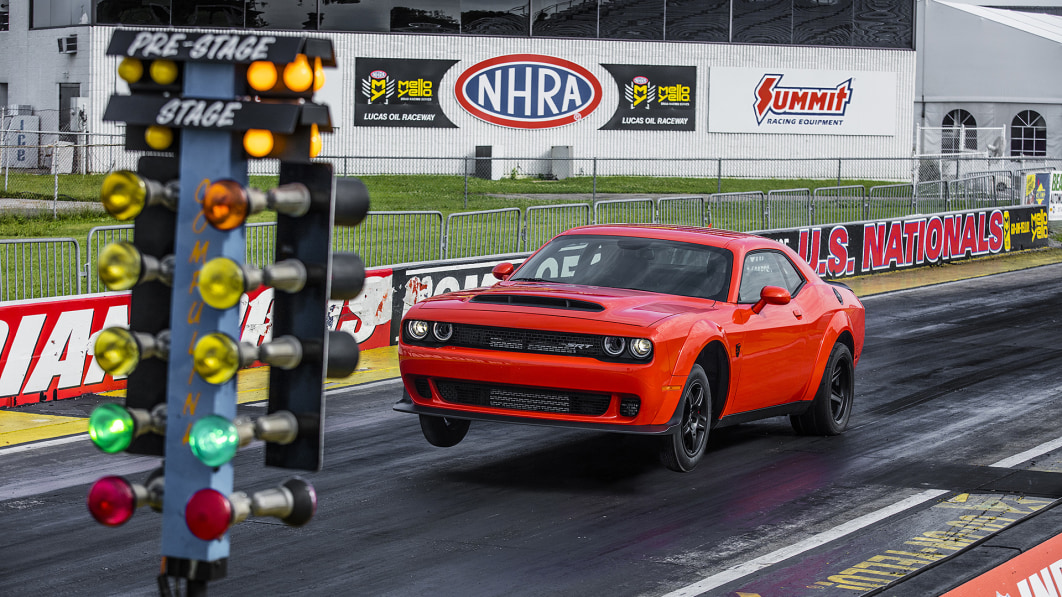NHRA’s drag racing rules now allow faster street-legal cars
Up until now, rules laid out by the National Hot Rod Association required any car that was capable of running the quarter mile in less than 10 seconds to have a roll cage. That means a sturdy set of metal tubes welded together to internally brace the interior of a vehicle, thereby making it safer in the event of a serious crash. As of today, however, that rule has been altered to allow for faster street-legal cars to compete.
Vehicles like the Dodge Demon, Tesla’s Model S and X Plaid, Chevy Corvette ZR1, Ford Mustang Shelby GT 500 and possibly some other Hellcat-badged or supercar competitors may have been too fast to legally compete at NHRA-sanctioned drag racing events, depending on the driver’s ability and determination. The revised NHRA rules state:
2014 and newer OEM model-year production cars to run as quick as 9.00-seconds and/or 150-mph (5.65-eighth mile). In addition, racers with 2008-2013 OEM model-year cars will still be permitted to run as quickly as 10.00-seconds and/or 135-mph (6.40-eighth mile).
The rules do stipulate that the car’s factory safety equipment has to be installed and operational, including things like the brakes and airbags, and that DOT-approved tires are fitted. Drivers will have to have the appropriate competition license to race, and convertibles and cars with T-tops have different regulations. Stickers celebrating the racing accomplishments will be offered.
“At NHRA, we very much support their commitment to performance and recognize that there is still a very large market for performance cars,” Lonnie Grim, NHRA National Tech Director, said in a statement. “At the same time, we acknowledge that NHRA needs to keep pace with the current trends, which is why we’ve announced these rules adjustments.”
Related video:

